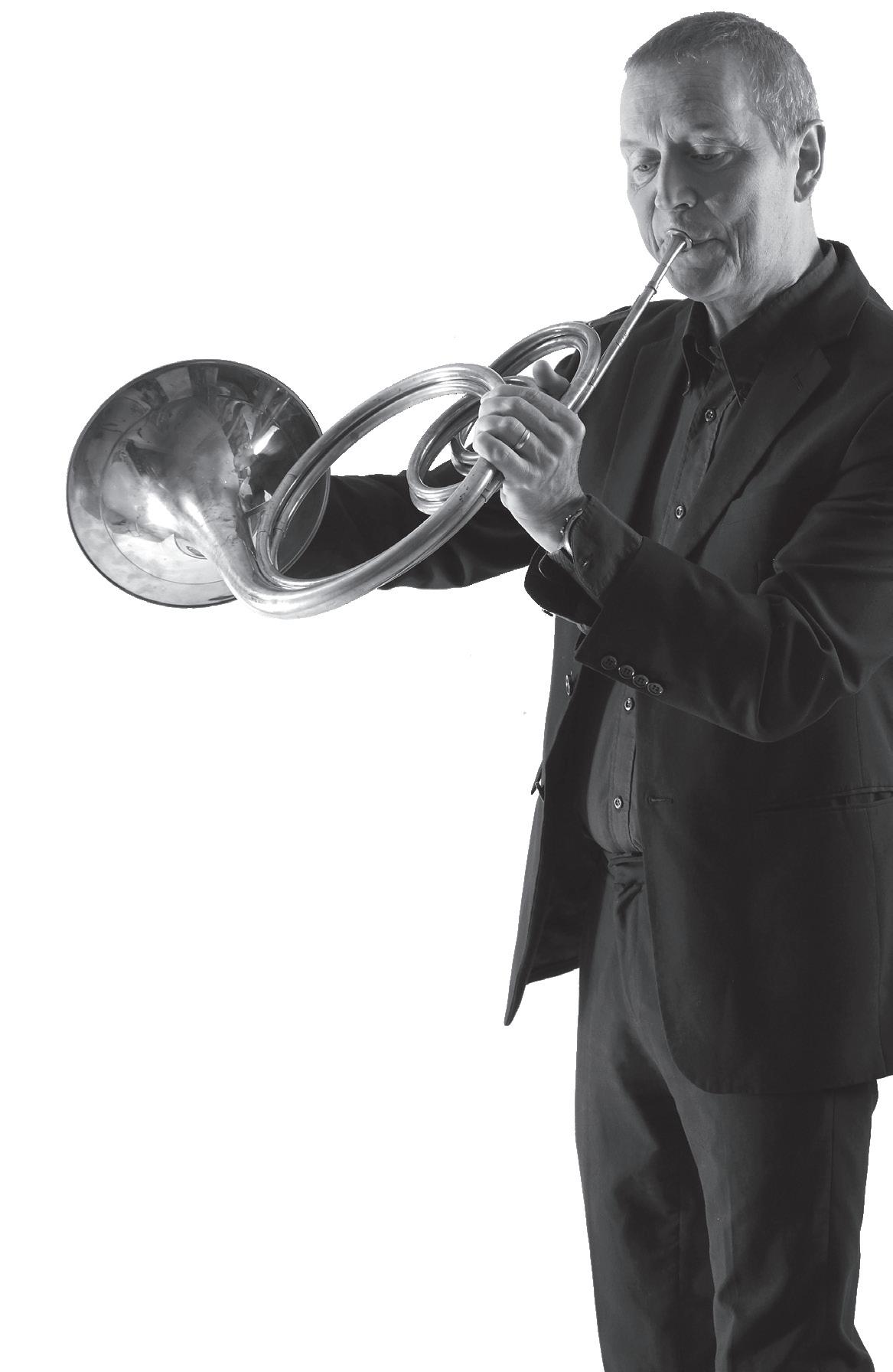
7.00pm 24 – 26 April
Queen Elizabeth Hall





7.00pm 24 – 26 April
Queen Elizabeth Hall










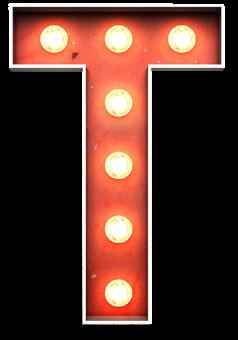
“What we call the beginning is often the end And to make an end is to make a beginning. The end is where we start from.”
From
Quartets by TS Eliot
Welcome to our 2023 / 24 season here at the Southbank Centre.
TS Eliot presents us with the conundrum of progress. How do ideas evolve, where do we continue, where do we originate? If it is true that you can hear the foundation of Bach, the great building blocks of western music, in the sound of Mendelssohn, can’t you also hear the sparkling innovation in Mozart that announces the genius of later generations? In the risk-taking dissonances and melodic invention of Purcell, that gives his words a brilliant musical drama, don’t we find the revolutionary tinder that inflames the subversive settings of Mozart’s operas, The Marriage of Figaro and The Magic Flute? What do we make of our tidy system of catalogues, of order, of convenient bundling into artistic periods – a history we like to describe as passing from ‘medieval’ to ‘romantic’ – when truth is repeatedly less convenient; when the Christmas Oratorio, Bach in his stylistic prime, is just 25 years earlier than Haydn’s first symphony, no less a statement of artistic assurance; when Mendelssohn’s third symphony was really his last.
If you find all of this puzzling, if not downright confusing, then you have come to the right place. So do we.


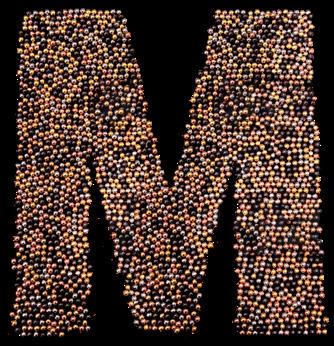



2023/24Season
Music is always part of a story. It might be that of a composer, the musicians performing it, or the audience absorbing it. It can be part of a collective chronicle or individual memories. It can hold the saga of a nation. In that sense we are always at the end, looking back.
The stories come alive when we begin to experience the music and curiosity drives us to begin our own journey. In our 2023 / 24 season of concerts at the Southbank Centre it is that desire to untangle the beginnings and endings – and all the bits in the middle – that has shaped our musical choices.
Thank you for joining with us to puzzle together this magnificent season.
It is a season built, of course, around the remarkable musicians of the OAE working with great artistic veterans, the guardians of the future and inspiring new generation talent. But the final, and most important, piece of the jigsaw is YOU. By being here in the audience today you have made the choice to support artistic endeavour, to sustain it and to be part of the story. Bravo.
Jessica Duchen
Who needs an excuse to celebrate a composer as fine as Felix Mendelssohn?
Strangely, though, he and his reputation remain entrapped in a cats-cradle of paradoxes. He is at once the best-loved and most underrated of early romantic geniuses.
He was a painstaking, obsessive craftsman, yet his music sounds effortless. The results are often structurally conservative, but ground-breaking in romantic, programmatic content. He was born Jewish and became a convinced Lutheran. And while celebrated far and wide for his compositions, he was equally successful as a conductor and as founder of the Leipzig Conservatory. Indeed, he was probably the 19th century’s closest equivalent to the multitalented, multitasking Leonard Bernstein.
Ask Sir András Schiff why he wanted to create a Mendelssohn series now and the response is a beaming smile. “It’s a love affair,” he says. “He is still so underrated and I feel we have to help. There are composers who are not enough appreciated – Haydn is one, Mendelssohn is another – but these are giants.
“The more I study Mendelssohn, the more I know about him, the more lovable he seems, both as a human being and as a musician. There is so much to admire and to thank him for. For example, we wouldn’t have had a Bach renaissance without him.” Given a manuscript copy of the Bach St Matthew Passion as a gift by his grandmother while he was a teenager, Mendelssohn, aged 20, staged the work’s first public revival since its composer’s death.
The series falls naturally into three programmes, Schiff says. “I wanted to concentrate on the symphonies and the three most important concertos, the two for piano and the E minor Violin Concerto. First, I wanted to cover all the symphonies, but especially No. 2, the ‘Lobgesang’ [Song of Praise], which I think is a towering masterpiece. They wouldn’t fit into two concerts, but with the concertos added, it works perfectly in three.”
The underrating of Mendelssohn would seem baffling, were there not such an undercurrent of darker 19th-century forces behind it. First, Schiff points out wryly, society tends to have certain romantic notions about its artists. “We have the preconceived idea that great art comes from suffering,” he says. “And also that we are such good people, we in humankind! We love compassion. We love to feel sorry for someone, because basically it makes us feel that we are better people.”
The trouble is that Mendelssohn is not an obvious underdog. Rather the opposite. He started life as a phenomenal child prodigy and was raised in a happy and wealthy family, with parents who steeped him and his equally talented elder sister, Fanny, in the finest cultural education of the day. “How about adopting the opposite of the traditional attitude? To be happy for somebody else’s happiness, success and talent?” Schiff suggests, and he’s not wrong.
One other aspect of Mendelssohn that is often underestimated is how technically demanding his music is. Performing the

two piano concertos is a challenge even without directing from the keyboard. When I spoke to him, Schiff was still considering exactly which fortepiano to choose for these concerts. “If you find a real historical instrument from the time which is in good condition, it’s very difficult to transport and to travel with, and they go out of tune immediately,” he comments. “So it will probably be a very good copy of a Graf or a Streicher.”
The instrument will need, first and foremost, a light touch: “Mendelssohn’s piano writing in the concertos, but also in general, presents very light textures. You need great dexterity: there are lots of notes, but it’s never crowded. It’s transparent. But for that, you have to play transparently.
“I don’t think there is room for conducting in addition. The hands are busy most of the time! I will occasionally stand up and lead for the tuttis, but mostly I will leave it to the leader – and the OAE has wonderful leaders. We work it out like chamber music.”
There is a disturbing aspect to the underrating of Mendelssohn, however. In short, attitudes that derive from anti-
Semitic smears originally put about by Richard Wagner are sometimes still unthinkingly parroted in the 21st century. “Wagner was a great genius, but a terrible character. What he wrote in his essay ‘Das Jundenthum in der Musik’ (‘Jewishness in Music’) is unforgivable.” In this notorious, bile-filled pamphlet, written in 1850, a couple of years after Mendelssohn’s death, Wagner accused him of writing music that was “sweet and tinkling without depth”.
“Unfortunately, his verdict is still very effective, and especially in the German speaking world,” Schiff says. “I still hear these derogatory half-remarks from musicians in Germany, referring to him as a little salon composer. This outrages me. I can’t change the world, but maybe I can convince a few people that this is not just worth playing and listening to, but is very great music indeed.”
Wagner’s comments were fuelled largely by jealousy. But Mendelssohn’s material success was the result both of extraordinary talent and of hard work on several fronts. “Mendelssohn was a master conductor who knew the orchestra
inside out,” Schiff says. “You don’t find any balance problems, especially not with the OAE. There are those wonderful passages in the middle movement of the G minor Piano Concerto – so beautiful, completely like chamber music – but my experience was also when we did the Schumann concerto, and even the Brahms concertos, that with the right approach and the right orchestra, the balance problems you sometimes experience with modern instruments disappear.”
But with his hefty schedule of conducting, directing the Conservatory, travelling (he came ten times to Britain), composing and raising a family of five, Mendelssohn always seemed to be working at twice the speed
and intensity of most other musicians. You can hear it in his music; his soundworld seems to “vibrate” at exceptional velocity. “He worked with this burning intensity,” Schiff says. “It’s true that it was a major blow when his sister, Fanny, died [in spring 1847], but in the end I think he worked himself to death.” Mendelssohn died of a stroke, the same ailment that had killed Fanny, in November 1847.
And so, from music to letters to his impressive painting and drawing, Mendelssohn’s legacy is one to treasure. “I have a wonderful watercolour of Amalfi by Mendelssohn on my piano at home,” Schiff says. “It is an eternal inspiration. Anything he touched turned into gold.”


The Piano Concertos in this series will be performed on the Blüthner No. 726. Built around 1859 – a precise date is difficult to determine as the archives of the Blüthner Company were destroyed in World War II – it has a rosewood case and its ‘Blüthner-Patent-Mechanik’ has been extensively restored. It is one of the biggest instruments produced by Blüthner at the time, at 255cm long, with two pedals – a dampening cancellation (sustaining) and ‘una corda’ (soft) pedals – and is tuned to A = 438Hz.
Julius Blüthner (1824 – 1910) established his factory in Leipzig in 1853. He was endowed with an entrepreneurial flair and travelled to trade fairs across the world demonstrating his instruments which were renowned for their innovation and quality craftsmanship. Particular attention was
paid to the soundboards made from Alpine wood, whilst in this instrument the strings in the bass run parallel (rather than cross-wise as with a modern instrument) and Blüthner’s unique mechanics give the pianist a very sensitive and controlled touch. This results in the distinctive sound of Blüthner pianos with their careful balance between a dark yet transparent bass register and the “sparkling” treble notes.
The reputation of Blüthner’s pianos was built on critical praise from a number of high profile performers. Composers who have visited the factory or owned the instruments have included Schumann, Liszt, Brahms, Tchaikovsky, Mahler and Rachmaninov.
The Blüthner No. 726 is part of the collection of Clavierwerkstatt Christoph Kern in Staufen, Germany where it was restored.
Wednesday 24 April 2024, 7.00pm at the Southbank Centre’s
Queen Elizabeth Hall
FELIX MENDELSSOHN (1809 – 1847)
Symphony No. 1
I. Allegro di molto
II. Andante
III. Menuetto: Allegro molto
IV. Allegro con fuoco
Piano Concerto No. 1
I. Molto Allegro con fuoco
II. Andante
III. Presto – Molto Allegro e vivace
Interval
Symphony No. 4 ‘Italian’
I. Allegro vivace
II. Andante con moto
III. Con moto moderato
IV. Saltarello. Presto
There will be a pre-concert talk by Benedict Taylor from the University of Edinburgh at 6.00pm in the Queen Elizabeth Hall Foyer.
Thursday 25 April 2024, 7.00pm at the Southbank Centre’s
Queen Elizabeth Hall
FELIX MENDELSSOHN (1809 – 1847)
Symphony No. 5 ‘Reformation’
I. Andante – Allegro con fuoco
II. Allegro vivace
III. Andante
IV. Andate con moto – Allegro vivace –Allegro maestoso
Piano Concerto No. 2
I. Allegro appassionato
II. Adagio. Molto sostenuto
III. Finale. Presto scherzando
Interval
Symphony No. 3 ‘Scottish’
I. Andante con moto – Allegro un poco agitato
II. Vivace non troppo
III. Adagio
IV. Allegro vivacissimo – Allegro maestoso assai
There will be a post-concert talk with Sir András Schiff, commencing 15 minutes after the concert finishes, in the Queen Elizabeth Hall Foyer.
Friday 26 April 2024 7.00pm at the Southbank Centre’s
Queen Elizabeth Hall
FELIX MENDELSSOHN (1809 – 1847)
Violin Concerto in E minor, Op. 64
I. Allegro molto appassionato
II. Andante
III. Allegretto non troppo – Allegro molto vivace
Interval Symphony No. 2 ‘Lobgesang’ (Song of Praise)
1. Sinfonia
Maestoso con moto – Allegro Allegretto un poco agitato Adagio religioso
2. Allegro moderato maestoso –Animato – Allegro di molto – Molto più moderato ma con fuoco –
3. Recititative (tenor) – Allegro moderato
4. Chorus. A tempo moderato –
5. Andante
6. Allegro un poco agitato – Allegro assai agitato – Recitative (tenor) –A tempo I moderato – Recitative –
7. Allegro maestoso e molto vivace
8. Chorale. Andante con moto – Un poco più animato
9. Andante sostenuto assai
10. Final chorus. Allegro non troppo –Più vivace – Maestoso
Text and translation on page 18
Orchestra of the Age of Enlightenment Choir of the Age of Enlightenment
Alina Ibragimova violin
Lucy Crowe soprano
Hilary Cronin soprano
Nicky Spence tenor
Sir András Schiff fortepiano / conductor
This series of concerts is supported by Mark & Rosamund Williams and Tim & Jenny Morrison, with additional support from Principal, Season and Project Patrons of the Orchestra of the Age of Enlightenment.
Surtitle translations © Richard Stokes, courtesy Emmanuel Music Inc.
Surtitles by Damien Kennedy
Violins I
Matthew Truscott
Kati Debretzeni
Alice Evans
Julia Kuhn
Daniel Edgar
Silvia Schweinberger
Dominika Feher
Florence Cooke
Claire Sterling
Anna Curzon
Violins II
Margaret Faultless
Andrew Roberts
Iona Davies
Henry Tong
Deborah Diamond
Jayne Spencer
Stephen Rouse
Oliver Cave
Violas
John Crockatt
Martin Kelly
Annette Isserlis
Kate Heller
Marina Ascherson
Anna Maria Wünsch
Cellos
Luise Buchberger
Andrew Skidmore
Catherine Rimer
Ruth Alford
Richard Tunnicliffe
Double basses
Christine Sticher
Cecelia Bruggemeyer
Carina Cosgrave
Paul Sherman
Flutes
Lisa Beznosiuk
Katy Bircher
Rosie Bowker
Oboes
Daniel Bates
Leo Duarte
Clarinets
Katherine Spencer
Sarah Thurlow
Bassoons
Jane Gower
Sally Jackson
Contrabassoon
Chris Rawley
Players in bold are OAE principal players
Horns
Roger Montgomery
Martin Lawrence
Gavin Edwards
David Bentley
Trumpets
David Blackadder
Phillip Bainbridge
Trombones
Philip Dale
Tom Lees
Edward Hilton
Ophicleide
Andrew Kershaw
Timpani
Adrian Bending
Keyboard
William Whitehead
Choir of the Age of Enlightenment
Sopranos
Miriam Allan
Emilia Bertolini
Tara Bungard
Amy Carson
Emily Dickens
Alice Gribbin
Angharad Gruffydd-Jones
Helena Moore
Joanna Songi
Amy Wood
Altos
Luthien Brackett
David Clegg
Helena Cooke
Sarah Denbee
Christopher Field
Rebekah Jones
Ruth Kiang
Amy Lyddon
Eleanor Minney
Sophie Timms
Tenors
William Balkwill
James Beddoe
John Bowen
Philippe Durrant
Thomas Herford
Samuel Jenkins
Richard Rowntree
Joseph Taylor
Nicholas Todd
Ben Vonberg-Clark
Basses
Jonathan Arnold
Francis Brett
Jack Comerford
Robert Davies
Malachy Frame
Hugo Herman-Wilson
Stephen Kennedy
Jon Stainsby
Philip Tebb
Jonty Ward
Jessica Duchen

Wednesday 24 April
Symphony No. 1
A child prodigy whose efforts exceeded Mozart’s at similar age, Felix Mendelssohn was fortunate to be nurtured by his cultured family in Berlin. His juvenilia include 13 symphonies for strings, written well before his celebrated teenage efforts, the Octet and the Overture to A Midsummer Night’s Dream, and his official Symphony No. 1 was composed when he was 15. “It comes as a sequel to those string symphonies, but with full orchestra,” András Schiff says. “It shows an incredible sense of form, proportion and counterpoint. Polyphony is everywhere in it.”
The symphony was premiered privately on 14 November 1824, to celebrate Felix’s sister Fanny’s 19th birthday. The Leipzig Gewandhaus Orchestra gave its first public performance on 1 February 1827, and in 1829 the composer conducted it in London, presenting the Philharmonic Society with its manuscript. The occasion helped to launch his dazzling reputation in Britain.
Mozart, Weber and Beethoven are audible influences, while plentiful counterpoint reflects his appetite for Bach. The first movement is full of Beethovenian fieriness and Mendelssohn’s characteristic energyin-overdrive. In the slow movement violin and woodwind seem effortlessly to offset one another’s lines. A scherzolike Menuetto is third, with an emollient central trio. The seething finale, nodding towards Mozart’s Symphony No. 40, forms a rousing conclusion.
At 22, Mendelssohn was spurred into writing his first piano concerto by that timeless inspiration, calf-love. Delphine von Schauroth, a fine pianist from an aristocratic family in Munich, could by Mendelssohn’s own admission wrap the whole establishment round her little finger if she so wished. But despite dedicating the concerto to her, Mendelssohn had pragmatic aims too: he gave its first performance himself, during a tour in which he featured as composer, pianist and conductor.
“Mendelssohn does something that Mozart and even Beethoven never did: he composed it through, so that there is no break,” András Schiff says. “Transition
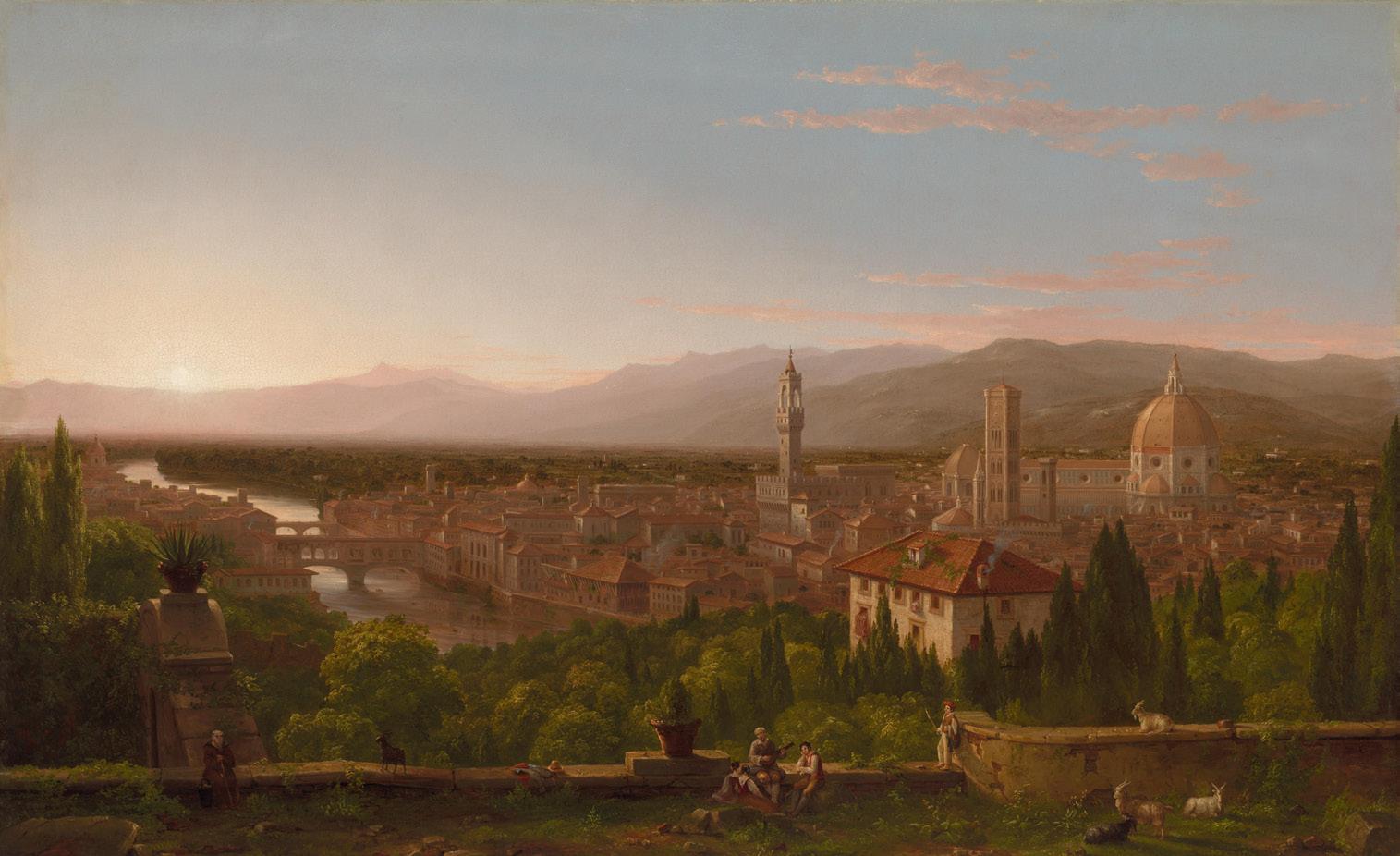
passages lead from one movement to the next. The piano concertos are rather economical, perhaps on the short side, but never too short or too long. The G minor has a wonderful opening, very Shakespearean in tone. I think Shakespeare is always in the back of his mind, whether it is A Midsummer Night’s Dream or The Tempest.”
Mendelssohn gives his soloist maximum opportunity for display: the piano writing is often light and filigree and dashes forward at exuberant speed. But Mendelssohn had no time for empty virtuosity: this music is full of melodic wonders and inspired twists. The opening movement fizzes with drama, the second is exquisitely lyrical, and the work concludes with an exhilarating finale.
Symphony
‘Italian’ “This is Italy!” Mendelssohn wrote to his parents. “And now has begun what I have always thought ... to be the supreme joy in life. And I am loving it.” His words are virtually mirrored in his ‘Italian’ Symphony’s sun-drenched opening.
Between 1829 and 1832, he undertook some mind-broadening European travels, which included about a year and a half in Italy. He declared that his ‘Italian’ Symphony sprang from every aspect of the country: landscape, people and culture. For him, perhaps following Beethoven’s ‘Pastoral’ Symphony, it was perfectly acceptable for music to draw on extramusical inspirations.
It was his third full-scale symphony (their numbering bears little relation to their chronology) and he conducted its 1833 premiere with London’s Philharmonic Society. Nevertheless, it went unpublished until 1851. Having revised it in 1834, he had intended to write alternative versions of the last three movements. Perhaps fortunately, he never did.
The symphony opens with a Tarantella-like allegro; there follows a slow movement resembling a pilgrims’ song, a warm and gracious minuet, and a dizzying Saltarello finale. András Schiff says: “The Italian is a perfect symphony, compact and condensed. It is one of the few pieces that
start in the major and end in the minor, though there are plenty the other way around. Mendelssohn was a keen traveller and such a sensitive artist that he could create atmospheres like the opening, full of light, like a breath of fresh air and joy. The second movement and the finale are quite different, however. My Neapolitan friends tell me that they are melancholic folk: jolly on the surface, but with something darker beneath. I think Mendelssohn captures that quality in this incredible final movement.”
Symphony No. 5 ‘Reformation’ Mendelssohn’s grandfather was the Enlightenment philosopher Moses Mendelssohn, whose writings paved the way for the emancipation of the German Jewish community. Felix’s father, Abraham, had his children baptised in 1816; hence the composer grew up as a devout Lutheran.
His Symphony No.5, ‘Reformation’, was really his second, begun in 1829, but posthumously published only in 1868. Originally it was commissioned for a ceremony scheduled for 25 June 1830 marking the 300th anniversary of the Augsburg Confession, the formal document approved by Martin Luther. Mendelssohn wrote to his sister, Fanny with wry commentary about the likely title: “Reformation Symphony, Confession Symphony, Symphony for a Church Festival, Juvenile Symphony… instead of all the stupid suggestions, send me one clever one; but I also want to hear the nonsensical ones...” Eventually he fixed on “Symphony to Celebrate the Church Revolution.”
Political unrest across Europe forced the event’s cancellation, however, and a Paris performance in 1832 was ditched after one rehearsal. Mendelssohn conducted the premiere in Berlin that year, but subsequently withdrew the work.
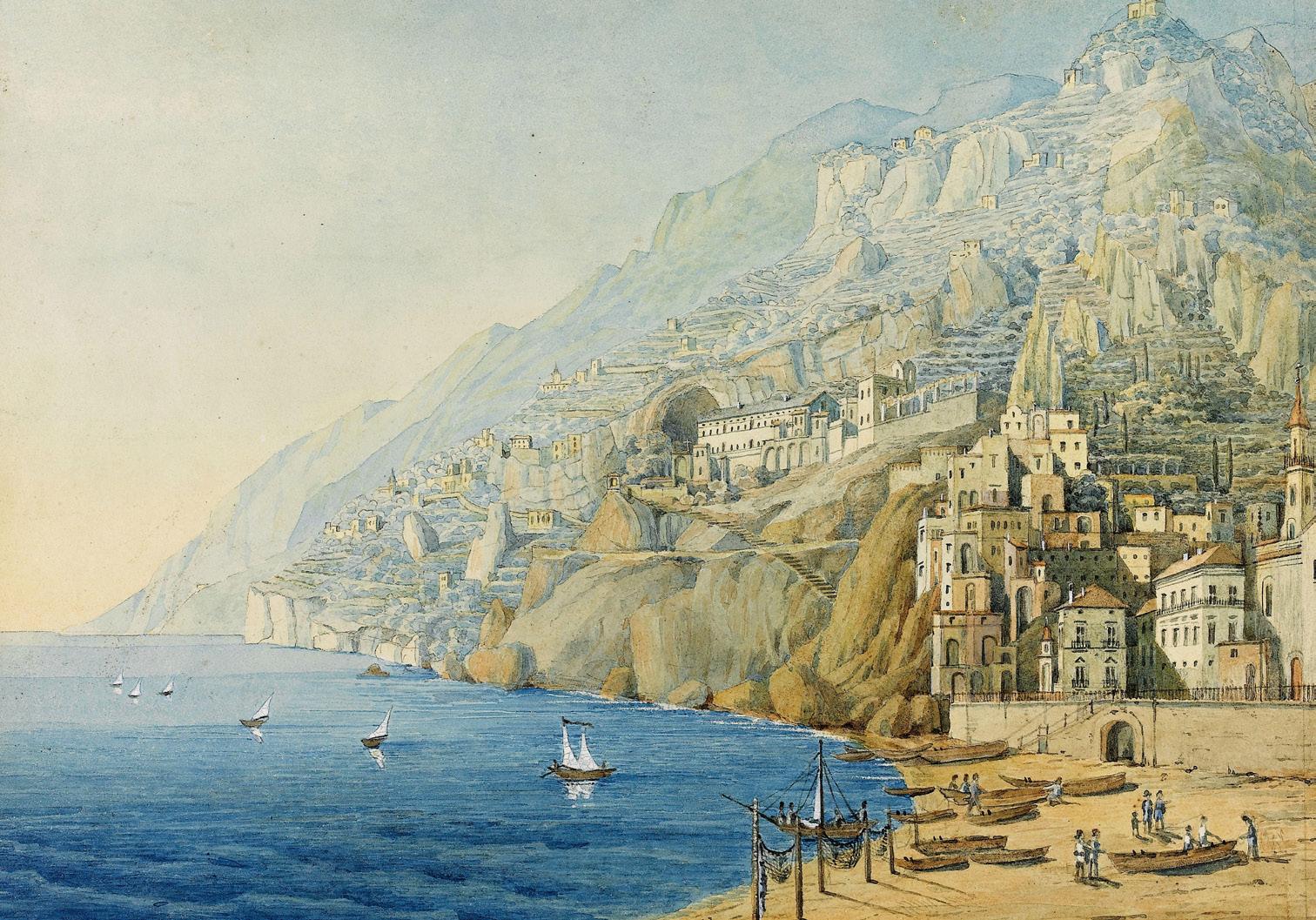
The piece features two recurring Lutheran themes: the chorale melody “Ein feste Burg ist unser Gott” (A Mighty Fortress Is Our God) and the rising line of the “Dresden Amen” (which Wagner later used in Parsifal). From the slow introduction, the Dresden Amen ushers in the turbulent Allegro. The minuet and trio are full of charm and the Andante makes up for brevity with intensity. Then the flute begins the theme of “Eine feste Burg”, joined gradually by more instruments. The chorale weaves through the spirited finale, ending the symphony in triumph.
The D minor concerto is very close to my heart,” András Schiff says, “but it doesn’t work by itself! The G minor concerto is a perfect piece, so when he writes the D minor, he thinks back to the first one. Their opening movements are closely related.”
Six years after the Piano Concerto No. 1, Mendelssohn started work on its successor while on honeymoon with his bride Cécile Jeanrenaud in March 1837. By now he was Europe’s most successful composer, conductor of the Leipzig Gewandhaus Orchestra, founder of the city’s Conservatory, virtuoso pianist and favourite of Queen Victoria. All this reduced his composing time and slowed the concerto’s progress.
The piece was a commission for that year’s Birmingham Music Festival, and proved, as he put it, “a real pain”. “I have already begun the new concerto and, as usual, I am terribly cross – what a wretched thing is the piano and its 100,000 little notes,” he wrote. Nevertheless, the premiere on 21 September, with Mendelssohn as soloist, was a great success – though when the audience demanded an encore, the composer was too tired to comply.
The opening, like Beethoven’s ‘Emperor’ Concerto, presents an exchange between orchestral phrases and piano flourishes before the allegro appassionato gets underway. The flavour is dramatic, but a
gentler, major-key contrast seems to grow organically out of the first theme. The movements flow in an unbroken stream: second comes a songlike Adagio and finally a brilliant scherzando which, Mendelssohn remarked, “creates so much effect as a piece of pianistic pyrotechnics that I often have to laugh when I happen to play it properly”.
Symphony No. 3 ‘Scottish’
“The Scottish Symphony couldn’t be more different from the ‘Italian’,” András Schiff says. “But again, it’s based on Mendelssohn’s own experience of visiting the country and of studying Scottish history and literature.”
Mendelssohn visited Scotland aged 20, during his first trip to Britain with his friend Carl Klingemann. “In the evening twilight we went today to the palace where Queen Mary lived and loved,” he wrote. “The chapel close to it is now roofless; grass and ivy grow there, and at that broken altar Mary was crowned Queen of Scotland. Everything around is broken and mouldering, and the bright sky shines in. I believe I found today in that old chapel the beginning of my Scottish Symphony.”
As it was not finished for another 13 years, however, that symphony became his fifth and last. It was premiered in 1842, first in Leipzig and then in London in front of Queen Victoria.
After the opening sombre introduction and stormy allegro there comes a joyous scherzo full of folk music rhythms. The slow movement could be likened to a lament for Mary Queen of Scots, and the finale is marked, unusually, ‘Allegro Guerriero” – fast and warlike – possibly inspired by the history of Glencoe.
“The challenge for the conductor and orchestra is to make the ending work,” Schiff comments. “This can be a problem. Otto Klemperer, one of my favourite conductors, disliked it and wrote a completely different ending, which is terrible! I would never dream

of doing that. But I think I have a solution. Mendelssohn gives precise instructions about how the coda should be played, but it risks being very repetitive, becoming noisier and more crowded. It’s better to start from far away, so that it gets nearer and nearer, and it can take a certain acceleration to come to a jubilant close.”
Violin Concerto in E minor
“The Violin Concerto is one of Mendelssohn’s greatest works,” András Schiff comments, “and it is very personal to me. It was the first great music that I consciously heard and loved. My father, who was an amateur violinist, had a collection of old 78rpm records, including Yehudi Menuhin’s recording with Georges Enescu conducting. I listened to it all the time. I still love the piece and that record very much. Here is one example where
the mature Mendelssohn matched the wonderful level of his early achievements.”
It was his last major orchestral work, written for Ferdinand David, concertmaster of Mendelssohn’s Leipzig Gewandhaus Orchestra. Although he began sketching it in 1838, it was not completed until 1845. It sounds so effortlessly perfect that it is startling to see how much pressure Mendelssohn was under, beset by overwork in his many roles. His death in 1847 of a cerebral haemorrhage seems to have been brought on largely by stress.
Flouting convention at the outset, the soloist plays the main theme’s first statement. Again, the movements run without a break, but for brief, atmospheric transitions which bind together opening allegro, berceuse-like central movement and sparky, light-footed finale.
The year 1840 marked the 400th anniversary of Gutenberg’s invention of the printing press. This held special resonances in Leipzig, a centre of book production – and here, for a threeday celebration in June, Mendelssohn composed a ‘Festgesang’ (festival song) to be performed in the city’s Marktplatz. He also conducted the festival’s closing concert, including the premiere of his new symphony, an ambitious choral work based on extracts from the Gutenberg Bible, Martin Luther’s translation of the scripture. Though written later than most of the other symphonies, it was published earlier, in 1841, hence termed No. 2. The score carried a quotation from Luther: “Rather I wished to see all the arts, especially music, serving Him who gave and created them.”
“This is a good example of Mendelssohn as a Jewish soul and mind who took up Christianity and believed in it,” Schiff says. “The knowledge of Bach, of the Protestant chorale melodies, is ever present in his music. He uses this also, for instance, in the Piano Trio No. 2 in C minor and in the Variations sérieuses.”
The “Symphony-Cantata” builds on the structure of Beethoven’s Ninth Symphony: it begins as a “Sinfonia”, but after several movements transforms into a gigantic choral bonanza. The Sinfonia begins with a trombone motif which returns throughout, fitting the words from Psalm 150 that open the “Cantata”. The sonata-form first movement leads into a graceful allegretto, which Schiff compares to Schubert’s song “Gretchen am Spinnrade” (Gretchen at the spinning wheel). The adagio religioso offers a moment of reflection before the music dramatically changes gear.
Now, with the return of the trombone motif and a thrilling build-up, the chorus enters, singing “Alles, was Odem hat, lobe den Herrn” (Everything that has breath praise the Lord). The Cantata’s nine movements, setting words from the Gutenberg Bible, encompass recitatives, arias and giant fugal choruses covering shadings from anxiety to hope, from darkness to light. Besides Beethoven, the examples of Handel’s Messiah and Haydn’s Creation are never far away from Mendelssohn’s irrepressible outpouring of thanksgiving and joy.
Leipzig Gewandhaus in 1840. Originally the clothmakers’ guild, used for concerts from 1781. Conductors of Gewandhaus Orchestra: Mendelssohn 1835 - 47. Lebrecht Music & Arts / Alamy Stock Photo

Symphony No. 2 ‘Lobgesang’
(Song of Praise)
Movement 2
Alles was Odem hat, lobe den Herrn!
Halleluja, lobe den Herrn!
Lobt den Herrn mit Saitenspiel, lobt ihn mit eurem Liede.
Und alles Fleisch lobe seinen heiligen Namen.
Alles was Odem hat, lobe den Herrn!
Lobe den Herrn, meine Seele, und was in mir ist, seinen heiligen Namen!
Lobe den Herrn, meine Seele, und vergiß es nicht, was er dir Gutes getan!
Movement 3
Saget es, die ihr erlöst seid durch den Herrn,
die er aus der Not errettet hat, Aus schwerer Trübsal, aus Schmach und Banden, die ihr gefangen im Dunkel waret.
Alle, die er erlöst hat aus der Not.
Saget es! Danket ihm, und rühmet seine Güte! Er zählet unsre Tränen in der Zeit der Not. Er tröstet die Betrübten mit seinem Wort.
Saget es! Danket ihm, und rühmet seine Güte!
Movement 4
Sagt es, die ihr erlöset seid, von dem Herrn aus aller Trübsal. Er zählet unsre Tränen.
Sagt es, die ihr erlöset seid, von dem Herrn aus aller Trübsal. Er zählet unsre Tränen in der Zeit der Not.
All that hath breath praise the Lord!
Halleluja, praise the Lord!
Praise the Lord with stringed instruments, praise Him with your hymn.
And let all flesh praise His Holy Name. All that hath breath praise the Lord!
Praise the Lord, O my soul, and all that is within me, praise His Holy Name!
Praise the Lord, O my soul, and forget not all His benefits!
Tell it forth, ye that are redeemed through the Lord,
That He freed you from your distress, From dire affliction, shame and slavery, ye who were snared in darkness.
All who He hath redeemed from distress, Tell it forth! Thank Him, and proclaim His goodness!
He counteth our tears in time of need.
He comforteth the bereaved with His Word. Tell it forth! Thank Him, and praise His goodness!
Tell it forth, ye that are redeemed, by the Lord from all your troubles. He counts our tears.
Tell it forth, ye that are redeemed by the Lord from all your troubles.
He counts our tears in time of need.
Movement 5
Ich harrete des Herrn, und er neigte sich zu mir und hörte mein Fleh’n.
Wohl dem, der seine Hoffnung setzt auf den Herrn!
Wohl dem, der seine Hoffnung setzt auf ihn!
Movement 6
Stricke des Todes hatten uns umfangen, und Angst der Hölle hatte uns getroffen, wir wandelten in Finsternis. Er aber spricht: Wache auf, der du schläfst, stehe auf von den Toten, ich will dich erleuchten!
Wir riefen in der Finsternis: Hüter, ist die Nacht bald hin?
Der Hüter aber sprach: Wenn der Morgen schon kommt, so wird es doch Nacht sein, wenn ihr schon fraget, so werdet ihr doch wieder kommen und wieder fragen: Hüter, ist die Nacht bald hin?
Die Nacht ist vergangen!
Movement 7
Die Nacht ist vergangen, der Tag aber herbeigekommen. So laßt uns ablegen die Werke der Finsternis, und anlegen die Waffen des Lichts und ergreifen die Waffen des Lichts!
Movement 8
Nun danket alle Gott, mit Herzen, Mund und Händen. Der sich in aller Not will gnädig zu uns wenden, der so viel Gutes tut; von Kindesbeinen an, uns hielt in seiner Hut, und allen wohl getan.
I waited for the Lord, and He inclined unto me, and heard my pleading.
Blessed are they whose hope is in the Lord! Blessed are they whose hope is in Him! The bonds of death had overtaken us, and the fear of Hell had found us, we wandered in darkness. But He said: Awake, ye who sleep, arise from the dead, I will enlighten you!
We called in the darkness: Watchman, what of the night? But the watchman said: Though morning comes, night comes too, Though you enquire, ye shall return And enquire again: Watchman, what of the night? The night is past!
The night has departed, but day is at hand. Let us therefore cast off the works of darkness, And put on the armour of light and seize the armour of light!
Now thank we all our God with hearts, hands and voices, who turns mercifully to us in all our needs; Who has done such wondrous things; Who from our childhood on has kept us in His protection,
Lob, Ehr’ und Preis sei Gott dem Vater und dem Sohne und seinem heil’gen Geist im höchsten Himmelsthrone. Lob dem dreiein’gen Gott, der Nacht und Dunkel schied von Licht und Morgenroth. Ihm danket unser Lied.
Movement 9
Drum sing’ ich mit meinem Liede ewig, dein Lob, du treuer Gott!
Und danke dir für alles Gute, das du an mir getan!
Und wandl’ ich in Nacht und tiefem Dunkel und die Feinde umher stellen mir nach; so rufe ich an den Namen des Herrn, und er errettet mich nach seiner Güte.
Drum sing’ ich mit meinem Liede ewig, dein Lob, du treuer Gott!
Und wandl’ ich in Nacht, so ruf’ ich deinen Namen an, ewig, du treuer Gott!
Movement 10
Ihr Völker, bringet her dem Herrn Ehre und Macht!
Ihr Könige, bringet her dem Herrn Ehre und Macht!
Der Himmel bringe her dem Herrn Ehre und Macht!
Die Erde bringe her dem Herrn Ehre und Macht!
Alles danke dem Herrn! Danket dem Herrn und rühmt seinen Namen
Und preiset seine Herrlichkeit!
Alles was Odem hat, lobe den Herrn! Halleluja, lobe den Herrn!
Praise, honour and glory be to God, the Father and the Son.
And to His Holy Spirit
On heaven’s highest throne. Praise to the God of the Trinity, who parted night and darkness from light and dawn.
Let us thank Him in our hymn.
Thus in my hymn shall I sing Thy everlasting praise, O one true God! And thank Thee for all the good things which Thou hast done for me!
And though I wander in night and deep darkness, and my enemies gather around me, yet I shall call upon the Name of the Lord, and He shall save me with His goodness. Thus in my hymn shall I sing Thy everlasting praise, O one true God. And as I wander in the night, I shall call on Thy Name, eternally, O one true God!
O ye peoples, bring unto the Lord glory and might!
O ye kings, bring unto the Lord glory and might!!
Let the heavens bring unto the Lord glory and might!
Let the earth bring unto the Lord glory and might!
Let all give thanks to the Lord! Thank the Lord and bless His Name and praise His Majesty!
All that hath breath praise the Lord! Halleluja, praise the Lord!
Translations by Richard Stokes

Join to enjoy exclusive films and support us in making access to music part of everyday life for the students at Acland Burghley School and beyond.
For just £1.99 a month
• Get exclusive access to films of OAE performances only available to our YouTube channel members.
• Support an artistic mission that begins in a North London comprehensive school and reaches around the world.
Help us:
• Redefine the relationship between culture and education.
• Make access to high-quality music and the arts a routine expectation of children growing up in this country.



Selected as a “Rising Star of 2022,” by BBC Music Magazine, Hilary Cronin won First Prize and the Audience Prize at the 2021 London Handel International Singing Competition. This led to debuts at the Handel Festival, Halle, in Francesca Cuzzoni: Handel’s Diva; at Teatro La Fenice, singing Fauré’s Requiem; with Freiburg Baroque Orchestra singing Ode to Purcell; and with Scottish Chamber Orchestra singing Mendelssohn’s A Midsummer Night’s Dream. Engagements during 2023 / 2024 include Galatea in Acis and Galatea, Oriana in Amadigi. Handel’s Brockes Passion and Virtù / Damigella L’Incoronazione di Poppea with The English Concert; Piacere Il Trionfo del Tempo e del Disinganno with Early Opera Company at Buxton International Festival; B Minor Mass and L’Allegro, il penseroso ed il moderato with English Baroque Soloists; J. S. Bach Cantatas with London Handel Orchestra, Christmas Oratorio with Oxford Bach Soloists and St John Passion with BBC Philharmonic; Messiah with Britten Sinfonia and the Hallé; Messiah and Haydn Nelson Mass with The Sixteen; Silete venti with The King’s Consort; the Nelson Mass at Newbury Spring Festival; and Command Performance: Music for an
Empress with Academy of Ancient Music. Her recordings include Second Lady Dido and Aeneas on Pentatone and Telemann’s Donner-Ode on cpo.
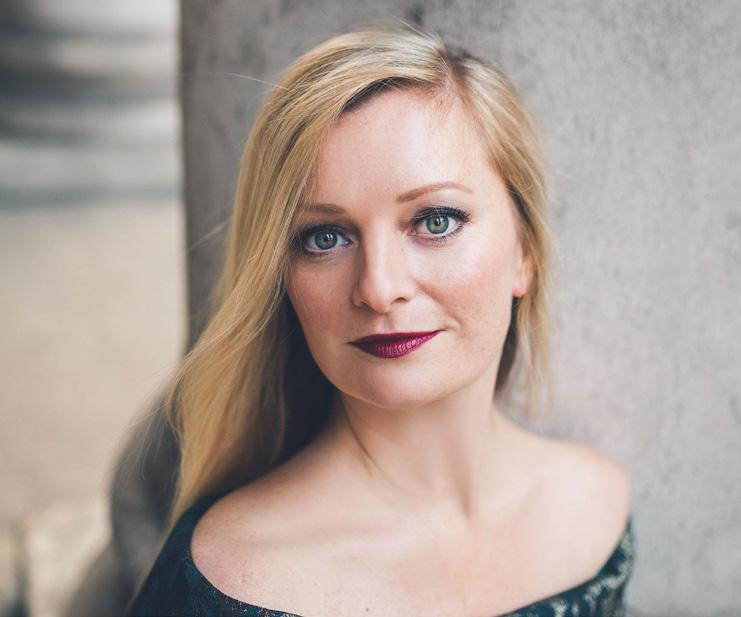
Lucy Crowe’s 2023 / 24 season includes the title role of Handel’s Rodelinda on tour in the USA and Asia with Harry Bicket and The English Concert, Tytania in Britten’s A Midsummer Night’s Dream at Garsington Opera and concerts with Sir Simon Rattle, Sir András Schiff, Sir John Eliot Gardiner, Bernard Labadie and Maxim Emelyanychev in Munich, Esterhazy, Gdansk, Tampere, Paris, Boston and London. A prolific recitalist, she will tour in the UK with accompanist Anna Tilbrook, including London’s Wigmore Hall.
With repertoire ranging from Purcell, Handel and Mozart to Verdi’s Gilda and Janáček’s The Cunning Little Vixen, she has sung with opera companies and orchestras throughout the world. Highlights of the last two seasons include Musetta in La bohème and Poppea in Agrippina at the Royal Opera House, Susanna in Le Nozze di Figaro at The Metropolitan Opera and Pamina in Die Zauberflöte at the Liceu Barcelona.
Her discography is extensive and in 2021 she received a Grammy nomination for Best Opera Recording for Janáček’s The Cunning Little Vixen (title role) with the London Symphony Orchestra and Sir Simon Rattle, a BBC Music Magazine award nomination for Rodelinda (title role) with The English Concert and Harry Bicket, and released her debut recital recording for Linn Records featuring Berg, Strauss and Schoenberg.

Performing music from baroque to new commissions on both modern and period instruments, Alina Ibragimova is recognised for the ”immediacy and honesty” (The Guardian) of her performances.
The 2023 / 24 season sees Alina return to the Royal Stockholm Philharmonic, Netherlands Radio Philharmonic, Deutsches Symphonie-Orchester Berlin, Orchestre national de Belgique, Orchestra of the Age of Enlightenment, and to the Mahler Chamber Orchestra as artistin-residence at their Hitzacker Festival. She will also debut with the Deutsche Kammerphilharmonie Bremen and tour Europe with both the Scottish Chamber Orchestra and Kammerorchester Basel.
Over the last two seasons Alina has performed concertos with the Budapest Festival Orchestra, Pittsburgh Symphony, San Francisco Symphony, Royal Concertgebouw Orchestra, London Symphony, Philharmonia Orchestra, London Philharmonic, Gürzenich-Orchester and Dresden Philharmonic, working with Robin Ticciati, Edward Gardner, Daniel Harding, Nathalie Stutzmann, Vladimir Jurowski and Maxim Emelyanychev among others.
In recital, Alina regularly performs at London’s Wigmore Hall, Amsterdam’s Concertgebouw, Berlin’s Pierre Boulez Saal, Salzburg’s Mozarteum, Hamburg’s Elbphilharmonie and at the Royal Albert Hall where she performed Bach’s Sonatas and Partitas for solo violin at part of the BBC Proms. She frequently collaborates with pianist Cédric Tiberghien, and is a founding member of the Chiaroscuro Quartet – one of the most sought-after period ensembles.
Alina’s discography on Hyperion Records ranges from Bach Concertos with Arcangelo through to Prokofiev Sonatas with Steven Osborne. Her 2020 recording of Shostakovich’s Violin Concertos won a Gramophone Award, while her 2021 recording of Paganini’s 24 Caprices topped the classical album charts on its release.
Born in Russia in 1985, Alina attended the Moscow Gnesin School, The Yehudi Menuhin School and Royal College of Music, studying with Natasha Boyarsky, Gordan Nikolitch and Christian Tetzlaff. An alumnus of the BBC New Generation Artists Scheme, Alina’s many accolades include two Royal Philharmonic Society awards and an MBE in the 2016 New Year Honours List.
Alina performs on a c.1775 Anselmo Bellosio violin kindly provided by Georg von Opel.

Sir András Schiff
Born in Budapest in 1953, Sir András Schiff studied piano at the Liszt Ferenc Academy with Pál Kadosa, György Kurtág and Ferenc Rados; and in London with George Malcolm. Having collaborated with the world’s leading orchestras and conductors, he now focuses primarily on solo recitals, play-directing and conducting.
Since 2004 Sir András has performed the complete Beethoven Piano Sonatas in over twenty cities, including Zurich where the cycle was recorded live for ECM. Other acclaimed recordings for the label include solo recitals of Schubert, Schumann and Janáček, alongside JS Bach’s Partitas, Goldberg Variations and Well-Tempered Clavier.
In recent years his Bach has become an annual highlight of the BBC Proms. Elsewhere, he regularly performs at the Verbier, Salzburg and Baden-Baden festivals; the Wigmore Hall, Musikverein and Philharmonie de Paris; on tour in North America and Asia; and in Vicenza, Italy where he curates a festival at the Teatro Olimpico.
Vicenza is also home to Cappella Andrea Barca – a chamber orchestra consisting of international soloists, chamber musicians and friends he founded in 1999. Together they have appeared at Carnegie Hall, Lucerne Festival and Salzburg Mozartwoche; while forthcoming projects include a tour of Asia and a cycle of Bach’s keyboard concertos in Europe.
Sir András also enjoys a close relationship with the Chamber Orchestra of Europe, Budapest Festival Orchestra and Orchestra of the Age Enlightenment. In 2018 he accepted the role of Associate Artist with the OAE, complementing his interest in performing on period keyboard instruments. He continues to support new talent, primarily through his “Building Bridges” series which gives performance opportunities to promising young artists. He also teaches at the Barenboim-Said and Kronberg academies and gives frequent lectures and masterclasses. In 2017 his book “Music Comes from Silence”, essays and conversations with Martin Meyer, was published by Bärenreiter and Henschel.
Sir András Schiff’s many honours include the International Mozarteum Foundation’s Golden Medal (2012), Germany’s Great Cross of Merit with Star (2012), the Royal Philharmonic Society’s Gold Medal (2013), a Knighthood for Services to Music (2014), a Doctorate from the Royal College of Music (2018), the City of Leipzig Bach Medal (2022) and at his 66th appearance at the Salzburg Festival in August 2023 he was awarded the Festival Pin with Rubies.

An artist of great integrity, Nicky Spence’s unique skills as a singing actor and the rare honesty in his musicianship have earned him a place at the top of the music profession. He was made an OBE in the 2023 King’s Birthday Honours, and is the winner of the RPS SInger Award 2024.
The 2023 / 24 season sees him return to the Opéra national de Paris as Edmundo, Marquès de Nobile in Adès’ The Exterminating Angel,
and to La Monnaie as Loge in Das Rheingold and, in concert sing Števa in Jenůfa with the London Symphony Orchestra /
Sir Simon Rattle.
Recent highlights include Laca in Claus Guth’s new production of Jenůfa for the Royal Opera, Siegmund in Richard Jones’ new production of The Valkyrie for the English National Opera, Albert Gregor for the Deutsche Staatsoper, Tichon in Damiano Michieletto’s new production of Káťa Kabanová at the Glyndebourne Festival and Erik Der fliegende Holländer for Grange Park Opera.
Nicky gives recitals internationally, and records prolifically. In 2020, he won the BBC Music Magazine Vocal Award and Gramophone’s Solo Vocal Award for his critically acclaimed recording of Janáček’s The Diary of One Who Disappeared. The BBC Music Magazine awarded him “Personality of the Year” in 2022.
Nicky is President Elect of the Independent Society of Musicians, and will take up the position in the 2024 / 25 Season.




A founding member of Champagne’s prestigious Grandes Marques Houses, Champagne Deutz has been making distinctive champagnes marked by finesse, elegance and complexity since 1838
Available at The Wine Society, Ocado and selected specialist retailers
In 1986, a group of inquisitive London musicians took a long hard look at that curious institution we call the Orchestra, and decided to start again from scratch. They began by throwing out the rulebook. Put a single conductor in charge? No way. Specialise in repertoire of a particular era? Too restricting. Perfect a work and then move on? Too lazy.
The Orchestra of the Age of Enlightenment was born.
And as this distinctive ensemble playing on period-specific instruments began to get a foothold, it made a promise to itself. It vowed to keep questioning, adapting and inventing as long as it lived. Residencies at the Southbank Centre and the Glyndebourne Festival didn’t numb its experimentalist bent. A major record deal didn’t iron out its quirks. Instead, the OAE examined musical notes with ever more freedom and resolve.
That creative thirst remains unquenched. The Night Shift series of informal performances are redefining concert formats. Its former home at London’s Kings Place has fostered further diversity of planning and music-making. The ensemble has formed the bedrock for some of Glyndebourne’s most ground-breaking recent productions.

In keeping with its values of always questioning, challenging and trailblazing, in September 2020, the OAE became the resident orchestra of Acland Burghley School, Camden. The residency – a first for a British orchestra – allows the Orchestra of the Age of Enlightenment to live, work and play amongst the students of the school.
Now more than thirty years old, the OAE is part of our musical furniture. It has even graced the outstanding conducting talents of John Butt, Elder, Adam Fischer, Iván Fischer, Jurowski, Rattle and Schiff with a joint title of Principal Artist. But don’t ever think the ensemble has lost sight of its founding vow. Not all orchestras are the same. And there’s nothing quite like this one.
Andrew Mellor

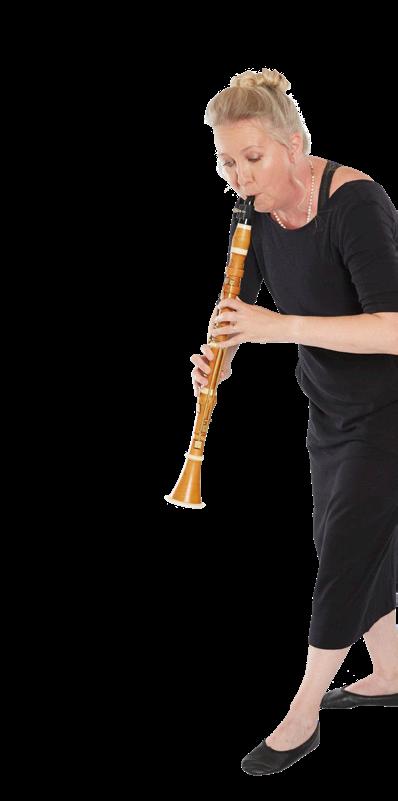
Chief Executive
Crispin Woodhead
Chief Operating Officer
Edward Shaw
Development Director
Harry Hickmore
Education Director
Cherry Forbes
Marketing Director
Doug Buist
Business Development Director
Jo Perry
Projects Director
Sophie Adams
Head of Digital Content
Zen Grisdale
Finance Manager
Malik Akash
Head of Individual Giving
Hattie Rayfield-Williams
Head of Grants
Madison Hallworth
Ticketing & Data Manager
Paola Rossi
Projects Manager
Ed Ault
Education Officer
Andrew Thomson
Development Officer
Luka Lah
Marketing Officer
Dora Tsang
Accounts Officer
Chloe Tsang
Education Officer
Sofia Swenson-Wright
Orchestra Consultant
Philippa Brownsword
Choir Manager
David Clegg
Librarian
Roy Mowatt
OAE-ABS Liaison
Anna Rimington
Leaders
Huw Daniel
Kati Debretzeni
Margaret Faultless
Matthew Truscott
Players’ Artistic Committee
Adrian Bending
Cecelia Bruggemeyer
Andrew Roberts
Katherine Spencer
Christine Sticher
Principal Artists
John Butt
Sir Mark Elder
Adam Fischer
Iván Fischer
Vladimir Jurowski
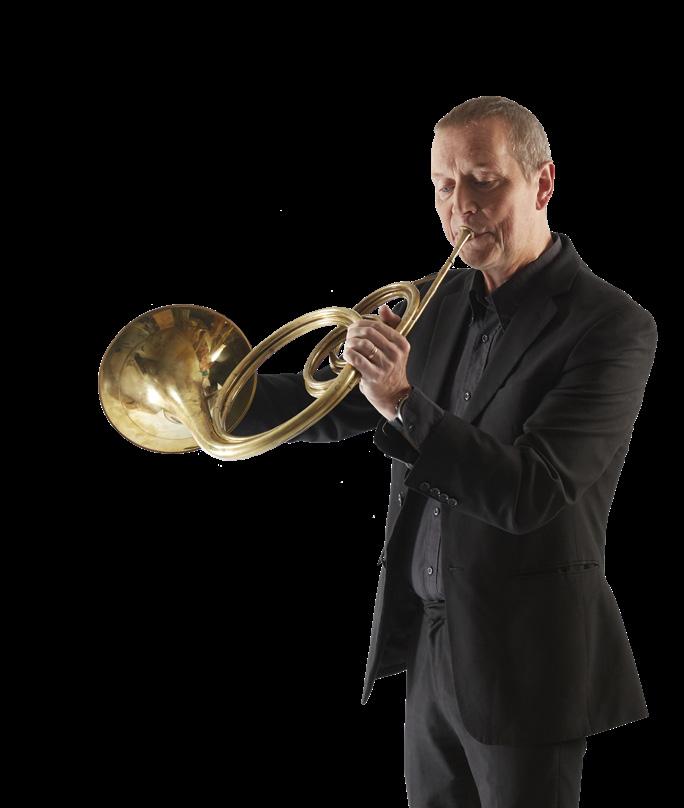
Sir Simon Rattle
Sir András Schiff
Emeritus Conductors
William Christie
Sir Roger Norrington
Life President
Sir Martin Smith
Board of Directors
Imogen Charlton-Edwards [Chair]
Daniel Alexander
Adrian Bending
Cecelia Bruggemeyer
Denys Firth
Adrian Frost
Alison McFadyen
David Marks
Rebecca Miller
Andrew Roberts
Katherine Spencer
Christine Sticher
Dr. Susan Tranter
Crispin Woodhead
OAE Trust
Adrian Frost [Chair]
Mark Allen
Imogen Charlton-Edwards
Dino Fontes
Paul Forman
Jessica Kemp
Steven Larcombe
Maarten Slendebroek
Sir Martin Smith
Caroline Steane
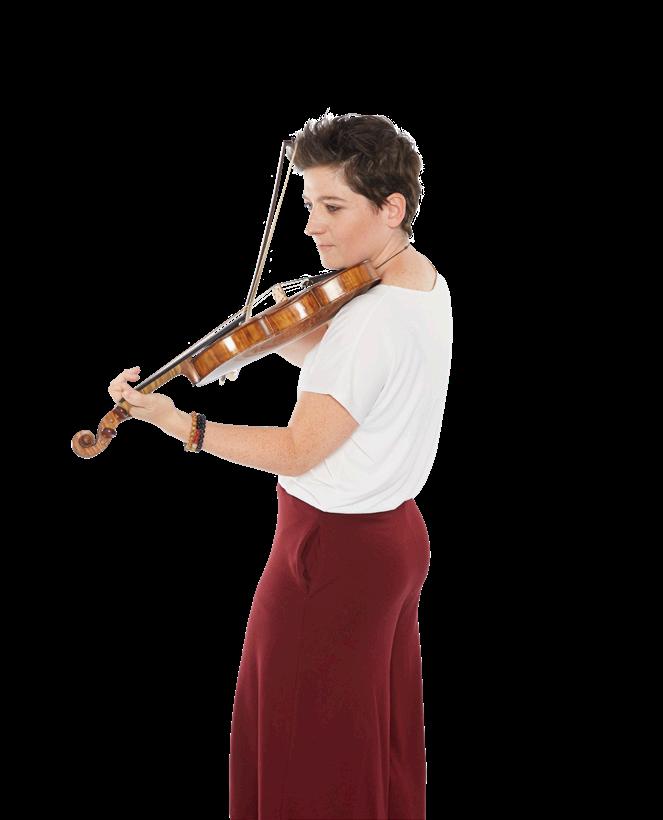

John Armitage Charitable Trust
Imogen Charlton-Edwards
Denys and Vicki Firth
Adrian Frost
Sir Martin and Lady Smith OBE
Dr Tony Trapp MBE
Season Patrons
Julian and Annette Armstrong
Nigel Jones and Françoise Valat-Jones
Philip and Rosalyn Wilkinson
Mark and Rosamund Williams
Project Patrons
Victoria and Edward Bonham Carter
Ian S Ferguson CBE and Dr Susan Tranter
Bruce Harris
Selina and David Marks
ABS Circle
Mark and Susan Allen
Sir Victor and Lady Blank
The Vernon Ellis Foundation
Peter Cundill Foundation
Sir Martin and Lady Smith OBE
Aria Patrons
Joanna and Graham Barker
Steven Larcombe
Peter and Veronica Lofthouse
Stanley Lowy
Alison McFadyen
Rupert Sebag-Montefiore
Maarten and Taina Slendebroek
Caroline Steane
Eric Tomsett
Chair Patrons
Daniel Alexander KC
– Principal Cello
Mrs Nicola Armitage
– Education Director
Katharine Campbell
– Violin
Anthony and Celia Edwards
– Principal Oboe
Claire Espiner
– Cello
James Flynn KC
– Co-Principal Lute / Theorbo
Paul Forman
– Co-Principal Cello, Violin & Co-Principal Horn
Jonathan Gaisman
– Viola
Andrew Green KC and Jennifer Hirschl
– Principal Clarinet
Melanie J. Johnson
Michael and Harriet Maunsell
– Principal Keyboard
Christina M
– Flute
Jenny and Tim Morrison
– Second Violin
Andrew Nurnberg
– Co-Principal Oboe
Stephen and Penny Pickles
– Viola
Professor Richard Portes
CBE FBA
– Co-Principal Bassoon
John and Rosemary Shannon
– Principal Horn
Sue Sheridan OBE
– Education
Sir Timothy and Lady Lloyd
Susan Palmer OBE
Andrew and Cindy Peck
Professor Richard Portes
CBE FBA
Crispin Woodhead and Christine Rice
Damaris Albarrán
Noël and Caroline Annesley
Sir Richard Arnold and Mary Elford
William Barham
Lady Sarah Bowness
George and Kay Brock
David and Marilyn Clark
David Emmerson
Jonathan Parker Charitable Trust
Lorna Gradden
Roger Heath MBE and Alison Heath MBE
Peter and Sally Hilliar
Philip Hughes
Breandán Knowlton
Kristin Konschnik
Kathryn Langridge
Moira and Robert Latham
Sir Timothy and Lady Lloyd
Roger Mears and Joanie Speers
David Mildon in memory of Lesley Mildon
Gary and Nina Moss
John Nickson and Simon Rew
Andrew and Cindy Peck
Tim Rhys-Morgan
Peter Rosenthal
Michael Spagat
Emily Stubbs and Stephen McCrum
Roger and Pam Stubbs
Simon and Karen Taube
Shelley von Strunckel
Mr J Westwood
Marina Abel Smith
Marianne and William Cartwright-Hignett
Harry Hickmore
Dr Jacob Mallinson Bird
Jessica Kemp and Alex Kemp
Michael Brecknell
Gerard Cleary
Mr and Mrs C Cochin De Billy
Chris Gould
Alison and Ian Lowdon
Haylee and Michael Bowsher
Tony Burt
Christopher Campbell
Sir Anthony and Lady Cleaver
David Cox
Martin Edmunds
Stephen and Cristina Goldring
Rachel and Charles Henderson
Malcolm Herring
Patricia Herrmann
Rupert and Alice King
Anthony and Carol Rentoul
Stephen and Roberta Rosefield
Bridget Rosewell
David and Ruth Samuels
Susannah Simons
Her Honour Suzanne Stewart
Bronze Friends
Tony Baines
Penny and Robin Broadhurst
Graham and Claire Buckland
Dan Burt
Michael A Conlon
Mrs SM Edge
Mrs Mary Fysh
Mr Simon Gates
Sarah Lady Gough
Martin and Helen Haddon
Ray and Liz Harsant
The Lady Heseltine
Mrs Auriel Hill
Rose and Dudley Leigh
Julian Markson
Stuart Martin
Richard I Morris Jr
Mike Raggett
Hugh Raven
Alan Sainer

Matthew and Sarah Shorter
Mr and Mrs Tony Timms
Mrs Joy Whitby
David Wilson
The Britford Bridge Trust
Dreamchasing
The Foyle Foundation
Garfield Weston Foundation
Henocq Law Trust
John Lyon’s Charity
The Linbury Trust
Paul Hamlyn Foundation
Skyrme Hart Charitable Trust
Steel Charitable Trust
The 29th May 1961 Charity
Albert and Eugenie Frost
Music Trust
Apax Foundation
The Brian Mitchell
Charitable Settlement
The Charles Peel
Charitable Trust
The de Laszlo Foundation
Fenton Arts Trust
Harold Hyam Wingate Foundation
Idlewild Trust
Orchestras Live
The Patrick Rowland Foundation
Thriplow Charitable Trust
The Vintners’ Company
Mark Allen Group
Champagne Deutz
Swan Turton
WSP
Honorary Council
Sir Martin Smith [Chair]
Sir Victor Blank
Edward Bonham Carter
Cecelia Bruggemeyer
Nigel Jones
Max Mandel
Marshall Marcus
Julian Mash
Greg Melgaard
Roger Montgomery
Susan Palmer OBE
Jan Schlapp
Diane Segalen
Susannah Simons
Lady Smith OBE
Emily Stubbs
Rosalyn Wilkinson
Mark Williams
Thank you to all supporters who wish to remain anonymous.
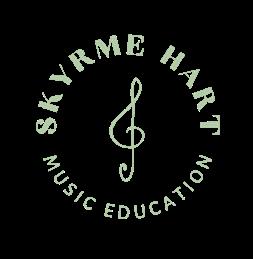
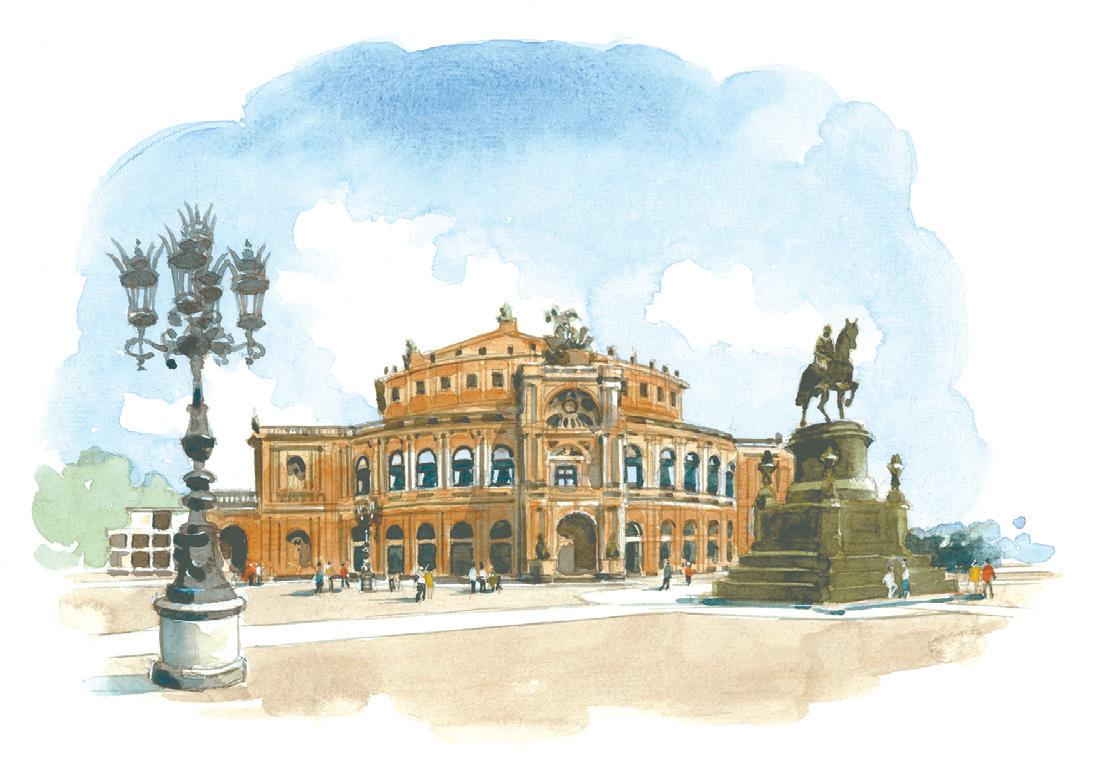
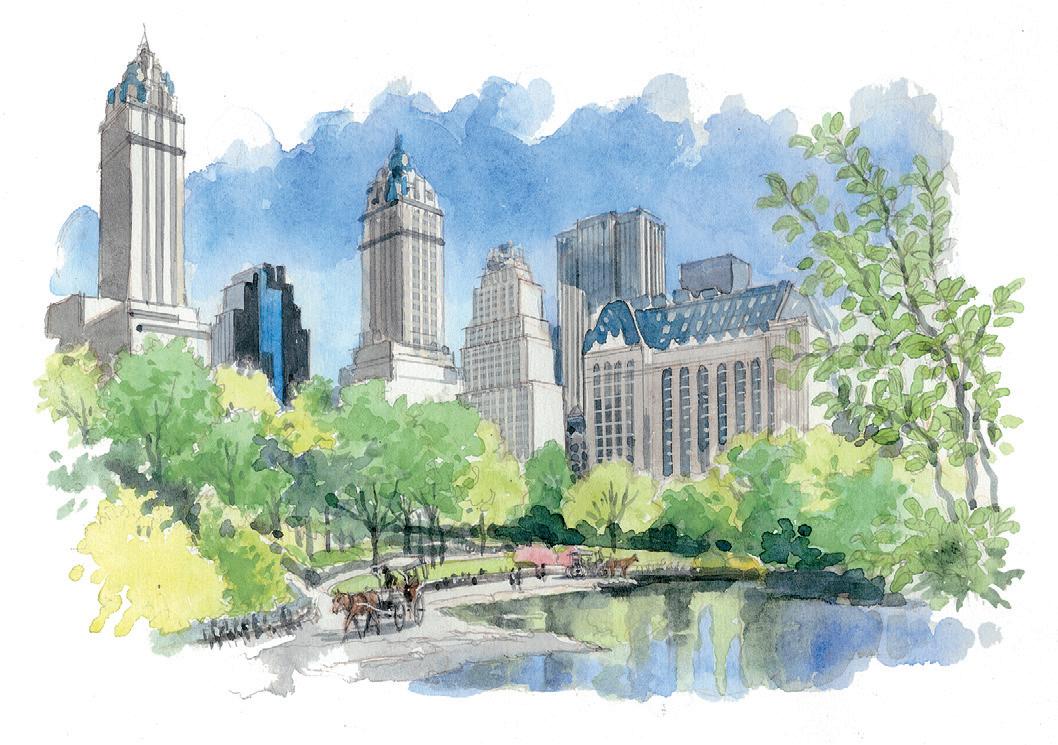




Gramophone has been the world’s leading authority on classical music since 1923. With 13 issues a year, every edition will enrich your classical music knowledge with more than 100 expert reviews of the latest recordings, plus in-depth artist interviews and features about composers past and present.
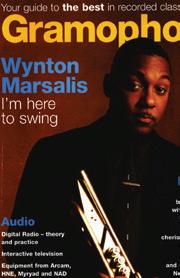


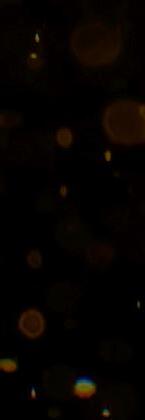



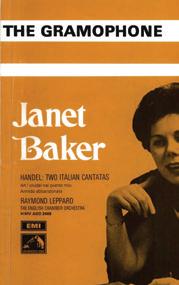













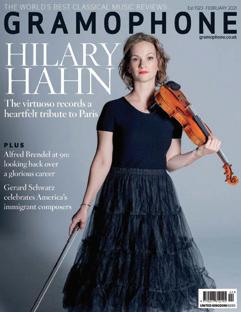




















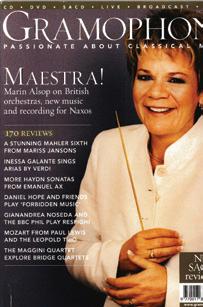







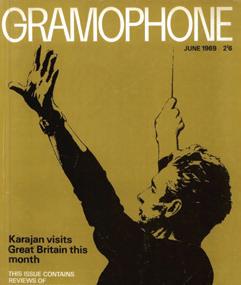








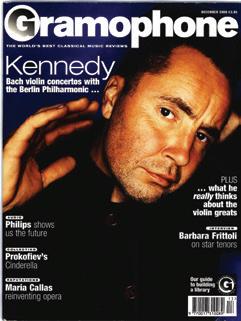






Our subscribers enjoy:






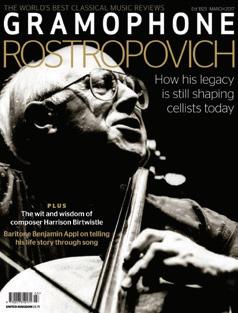
13 new print issues throughout the year, delivered direct to your door
13 new digital issues each year, available to read on your digital devices
Access to our complete digital archive, containing every issue of Gramophone over the past century


50,000+ recording reviews in our searchable online database, bringing you the best new releases and recommended recordings of classic works



“It’s
been wonderful to focus on social musicmaking with an emphasis on experimentation, empathetic playing, and musical expression rather than just the technical aspects of the job. The tutors have been inspiring and supportive and it’s been lovely to meet new amazing colleagues.”
OAE EXPERIENCE PARTICIPANT
In February, our new cohort of Experience students joined us for a three-day intensive course on Haydn symphonies, led by Maggie Faultless, Leo Duarte and Martin Lawrence, culminating in a fabulous performance at Heath Street Church. We also invited local families to join us for a free Teatime TOTS session at Acland Burghley led by Cherry Forbes which was great fun and was enjoyed by all.
Students will have further opportunities to learn with the OAE throughout the year with a further course on baroque repertoire planned for September.
After teacher training sessions and workshops in 16 primary schools from across London, in just two weeks in March our OAE Education team gave nine concerts to over 3,000 children…
The OAE Experience Scheme is supported by Ann and Peter Law and the Henocq Law Trust.


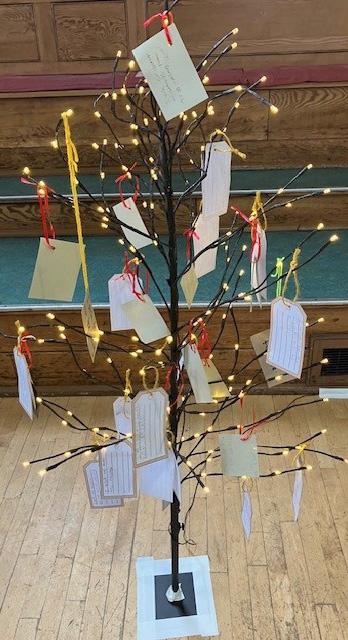
Early Years pupils took part in Pack your Bags concerts, going on a musical scooter tour of Europe presented by composer and animateur Raph Clarkson. Using Boyce Symphony No. 5 as our anchor piece, pupils travelled to France, Italy and Austria.
“I wish I had the opportunity to experience something like this as a kid. But I’m glad I was able to experience it as an adult! I feel richer today…”
OAE EXPERIENCE FEEDBACK AFTER TEATIME TOTS
Key Stage 1 pupils took part in Bach, Musical Gifts and the Joy of Singing Together, again led by Raph. Exploring Bach’s wonderful first Brandenburg Concerto, pupils listened to the musical gifts Bach wrote for the orchestra and joined in with singing music together. As part of the project, pupils wrote wishes for themselves or others – some were incorporated into a new song during each concert.
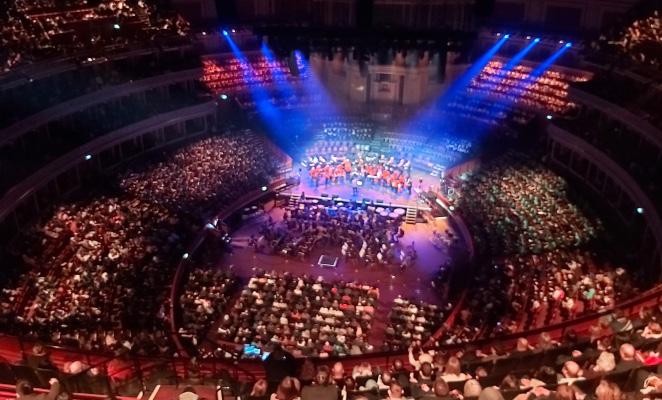
“Thank you so much for all your hard work, enthusiasm, music skills and general loveliness with the children. Those who have come in so far absolutely loved it and are totally buzzing this morning!”
TEACHER FROM CRICKET GREEN SCHOOL
Merton Celebration
Students from Cricket Green and Perseid Special schools took centre stage at the Royal Albert Hall alongside the OAE singing ‘Something Special’ with over 1,000 children from across Merton primary schools. Working with Raph Clarkson and OAE musicians, the students wrote an overture to the song which featured the people and things that were special to them.





In September 2020, we took up permanent residence at Acland Burghley School in Tufnell Park, north London. The residency – a first for a British orchestra – allows us to live, work and play amongst the students of the school.
The school isn’t just our landlord or a physical home. Instead, it allows us to build on 20 years of work in the borough through OAE’s long-standing partnership with Camden Music. Our move underpins our core Enlightenment mission of universal engagement, of access without frontiers. Our regular programme of activity at Acland Burghley includes ‘Encounter Sessions’ introducing the Orchestra to each new Year 7 cohort, workshops for GCSE music and dance students, and our Musical Connections and Ground Base initiatives supporting students with special educational needs and disability. We will be closely involved in delivering the new Government T Level qualifications.
The value of our residency in Acland Burghley School is realised in many ways beyond the immediate practice of orchestral musicianship. One of the key objectives is to lift aspirations and broaden horizons for life beyond the school. We want to help students leave school with richer CVs and stronger professional aspirations. One great way to do that is to mentor the next generation in all those things we have learned as an organisation. This part of our mission captured the imagination of Dreamchasing, Sir Ron Dennis’ charitable foundation, who generously fund our Dreamchasing Young Producers programme – a group of young people acquiring skills in management and production from budgeting to camera
operation. You may have seen the costumes some of them designed for our performances of Princess Ida in June… and keep an eye out for them in the foyer during tonight’s event!
Life at Acland Burghley will also influence our artistic development. Last summer we began work on our Breaking Bach project. An ensemble of eight talented hip-hop dancers worked with internationally renowned choreographer Kim Brandstrup on a new work inspired by Bach’s Double Violin Concerto. The first phase culminated in a triumphant showcase performance at English National Ballet’s Mulryan Centre for Dance on 9 October and its future life will see it develop into a full scale OAE production.
Alexander Parry
Anastasia
Giampoulaki
Armin Eorsi
Arthur Amidon
Arthur Shevlin
Colin Keppler
Daniel Miliband
Daniel Wilton-Ely
Dimitris Zamenopoulos
Filip Kounoupas Prastalo
Harvey O’Brien
Ines Whitaker
Iremide Onibonoje
Jaeden Ferritto
Jessica SextonSmith
Laurie WilkinsonWest
Leonard Benoliel
Louis MadelaineRose
Louis Schroell-Tite
Mikey Hau
Mischa Masters
Nathan Kilby
Raph DavidDickens
Rafi Quayeem
Rowan Thomas
Sacha Cross
Sophia Vainshtok
Tamila Saienchuk
Tom Cohen
Zain Sikand


Introduction to the Orchestra for Year 7, September 2023
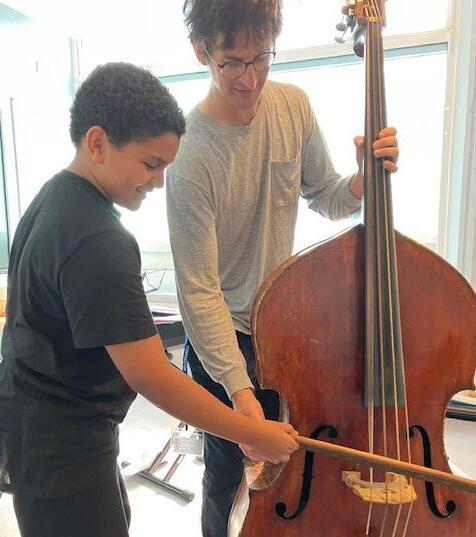
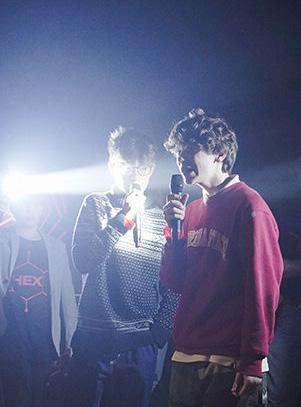

Students from Acland Burghley School making costumes for our Princess Ida production, June 2023

Dreamchasing Young Producers
We hope that the music of Mendelssohn and all the composers we’ve played this season has brought you joy. Buying a ticket for a concert is vital to supporting the OAE, its musicians and live classical music.
At the OAE we believe that we cannot underestimate the power of music to transform all of us. Hearing live classical music should be something every person can enjoy and access to culture should be a normal part of growing up in the UK for every child. From brilliant Mendelssohn to our pioneering partnership with Acland Burghley School we are working every day to make that a reality.
Find out more about how you can support us to achieve this at oae.co.uk/join.





We’re the largest arts centre in the UK and one of the nation’s top visitor attractions, showcasing the world’s most exciting artists at our venues in the heart of London. We’re here to present great cultural experiences that bring people together, and open up the arts to everyone.
The Southbank Centre is made up of the Royal Festival Hall, Queen Elizabeth Hall, Purcell Room, Hayward Gallery, National Poetry Library and Arts Council Collection. We’re one of London’s favourite meeting spots, with lots of free events and places to relax, eat and shop next to the Thames.
We hope you enjoy your visit. If you need any information or help, please ask a member of staff. You can also write to us at Southbank Centre, Belvedere Road, London SE1 8XX, or email hello@southbankcentre.co.uk
Subscribers to our email updates are the first to hear about new events, offers and competitions. Just head to our website and sign up.

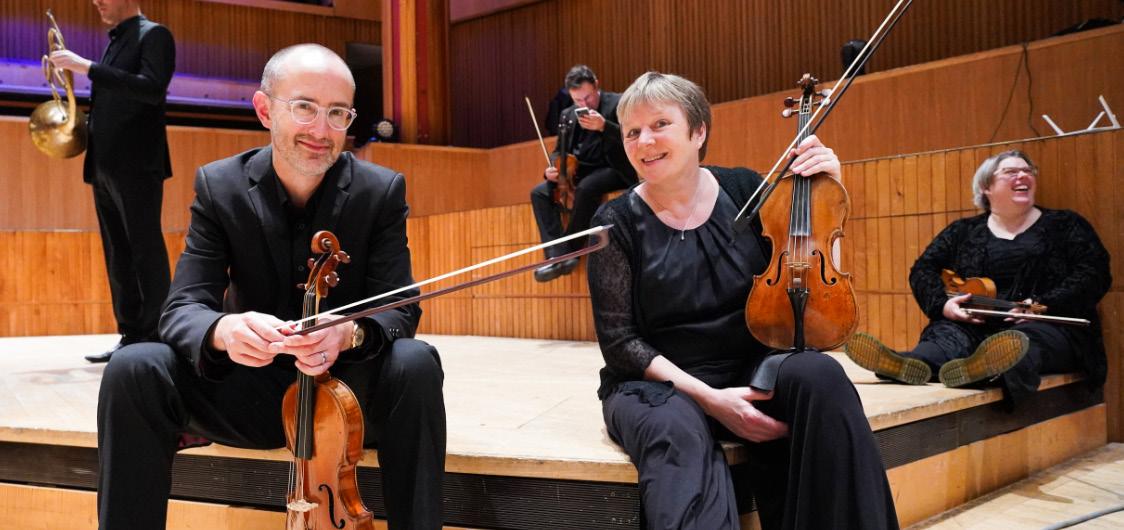
Without the generosity of our Friends, the OAE would not exist.
When you become an OAE Friend, you join us in bringing great music to life. We then give you a front-row and behind-the-scenes view of our work, so that you can see the impact that your donation really makes. This includes supporting our ambitious season of concert performances, digital productions on OAE Player, improving access to music through our Education programme, and our community work at Acland Burghley School.
Whether you wish to watch the rehearsals or get to know the players, a Friends membership offers a heightened OAE concert-going experience and allows you to support the orchestra you love. With your help, we can keep the music playing.
Become a Friend for as little as £50 a year and receive the following benefits:
• Priority booking
• Access to open rehearsals
• Get to know the players
• Regular updates from the orchestra.
To become a Friend, scan the QR code, visit oae.co.uk/support-us or contact us at development@oae.co.uk or 020 8159 9317

Strike out on more adventures with tunes and rhythms from the Baroque era.
Tickets are from just £4 for tots and £12 for grown-ups and are available on our website.
10.30am & 12.00 noon Saturday 29 June
Royal Festival Hall
Join us as we explore the world around us in our lively concerts for 2 – 5 year olds and their grown ups. Be sure to bring your clapping hands, your singing voices and of course your stamping feet!
For tickets booked through the Southbank Centre, booking fees apply online (£3.50) and over the phone (£4). There are no booking fees for in-person bookings, Southbank Centre Members, Supporters Circles and Patrons.

See page 46 for the whole 2024/25 season.
for 2–5 year olds with their parents or carers at the Southbank Centre
29 June
Let’s Go on an Adventure!
Chamber music down a local pub
14 May, Chalk Farm
The Fiddler’s Elbow
Mission: to explore our place in the cosmos guided by the intergalactic genius of JS Bach. Each monthly event features one of Bach’s cantatas, and other choral and instrumental works, alongside a talk by an eminent astronomer.
New season coming in Autumn 2024









SYMPHONY NO. 5
7.00pm, Sunday 13 October
Queen Elizabeth Hall
THE BRANDENBURG CONCERTOS
7.00pm, Wednesday 13 November
Queen Elizabeth Hall
BAROQUEBUSTERS
7.00pm, Thursday 9 January
Queen Elizabeth Hall
BEETHOVEN

HERO / REBEL
7.00pm, Thursday 27 February
Queen Elizabeth Hall
DAS JAHR
THE YEAR
7.00pm, Sunday 23 March
Queen Elizabeth Hall
BACH ST MATTHEW PASSION
7.00pm, Thursday 3 April
Royal Festival Hall
SCHUMANN’S
PIANO CONCERTO
7.00pm, Thursday 22 May
Royal Festival Hall
ENIGMA VARIATIONS
7.00pm, Wednesday 4 June
Queen Elizabeth Hall
